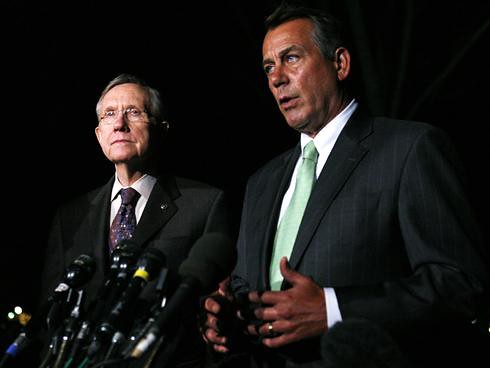Where Are We Now? Congress, White House Reach Agreement on Temporary Spending Bill
By
Chris Hellman
Posted:
|
Budget Process
On July 31 Senate Majority Leader Harry Reid (D-NV) and House Speaker John Boehner (R-OH) announced that they had reached an agreement on a temporary spending bill – known as a “continuing resolution” (CR) – that will fund government operations for six months starting when the new fiscal year begins on October 1. According to Senator Reid the White House will support the agreement. Speaker Boehner said Congress will vote on the actual legislation in September, after the annual August recess.

Each year Congress must enact, and the President sign into law, twelve appropriations bills which provide the majority of funding for discretionary programs and operations of the federal government. For any appropriations bill not enacted, Congress approves a temporary spending bill – known as a continuing resolution – which permits a government agency to continue to operate at existing funding levels.
Interestingly, according to news reports the agreement provides $1.047 trillion in discretionary funding – the amount agreed to for fiscal year 2013 in the Budget Control Act of 2011 (BCA) which sets overall annual spending targets for Congress for the next decade. Normally a CR would fund programs at current levels, which in the case of the BCA is $1.043 trillion for FY2012 – slightly lower than the levels reported to be in the new agreement.
The agreement could be viewed as a setback for House Republicans and House Budget Committee Chair Paul Ryan (R-WI). The House has been passing appropriations bills using the funding levels set out in Chairman Ryan’s FY2013 budget resolution, which includes higher spending for defense and lower spending for non-defense discretionary (NDD) programs than were called for under the Budget Control Act of 2011 (BCA). The BCA sets overall annual spending targets for Congress for the next decade.
Likewise the agreement can be viewed as a political victory for Senate Democrats and the Obama Administration, who had both argued that Congress should enact appropriations bills that use the higher NDD funding levels included in the BCA. President Obama, for example, had already indicated that he would veto any appropriations bill that came to him which included funding that differed from the amounts set by the BCA.
Normally, continuing resolutions are drafted and enacted right before the end of the fiscal year, and only for the programs for which no funding has already been approved. The fact that this agreement was reached two months early acknowledges what most Washington watchers already know – that in a divisive election year there was no chance that Congress would be able to come to an agreement on any spending legislation. Agreeing on a CR now would avoid the messy political fights and threats of a government shutdown that have marred similar congressional deals in recent years, which in this case would have occurred shortly before the November elections.
Finally, the agreement does NOT resolve the two thorniest political issues in Washington – what to do about the pending automatic spending cuts called for under the BCA , and about the imminent expiration of the Bush-era tax cuts, both of which will occur at the end of the year – the so-called “fiscal cliff.” So while politicians have eliminated one potential fire, there’s still plenty of combustible material in Washington. Stay tuned.